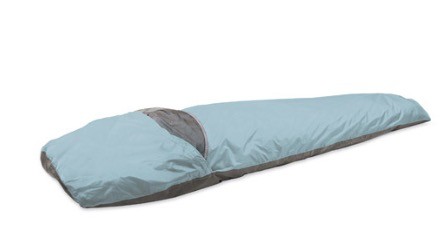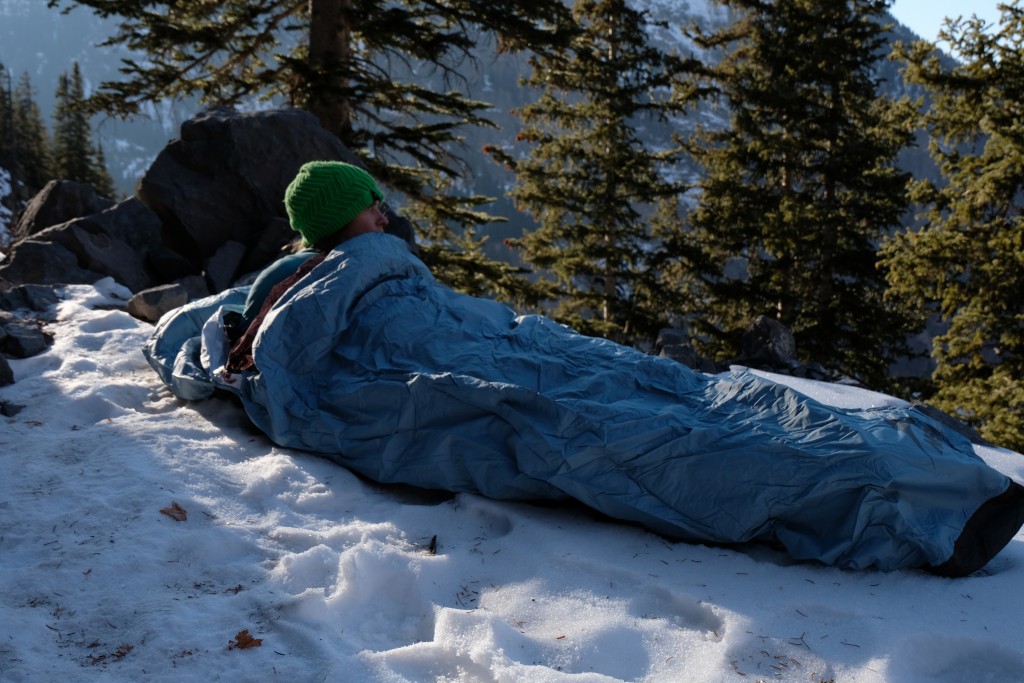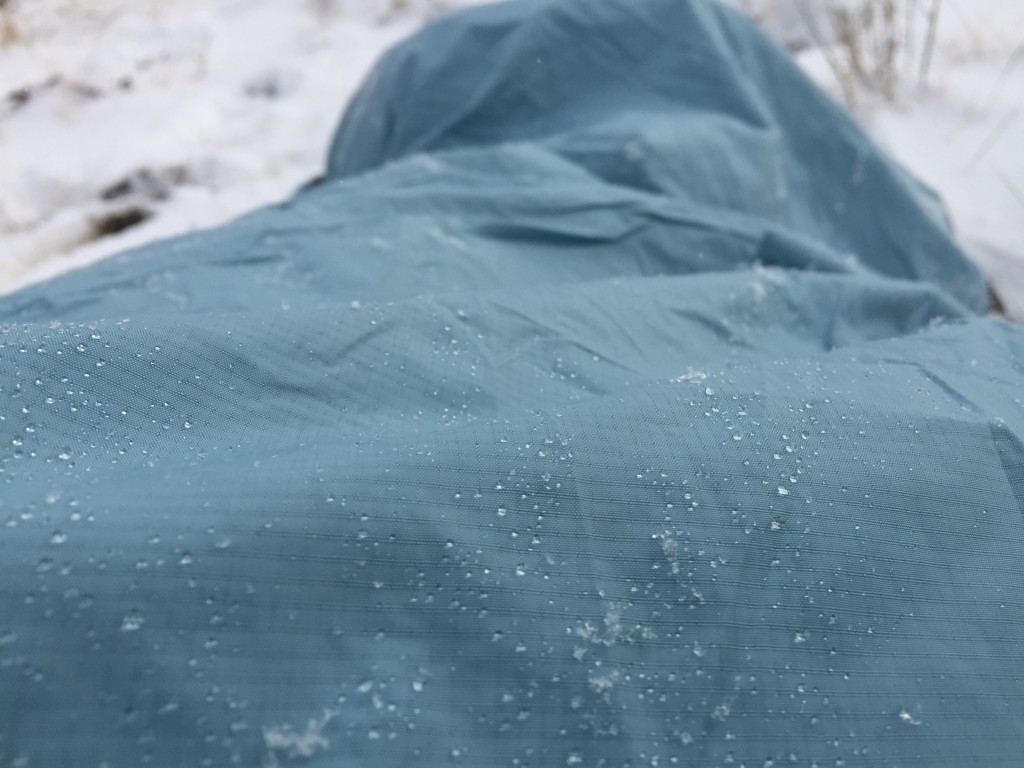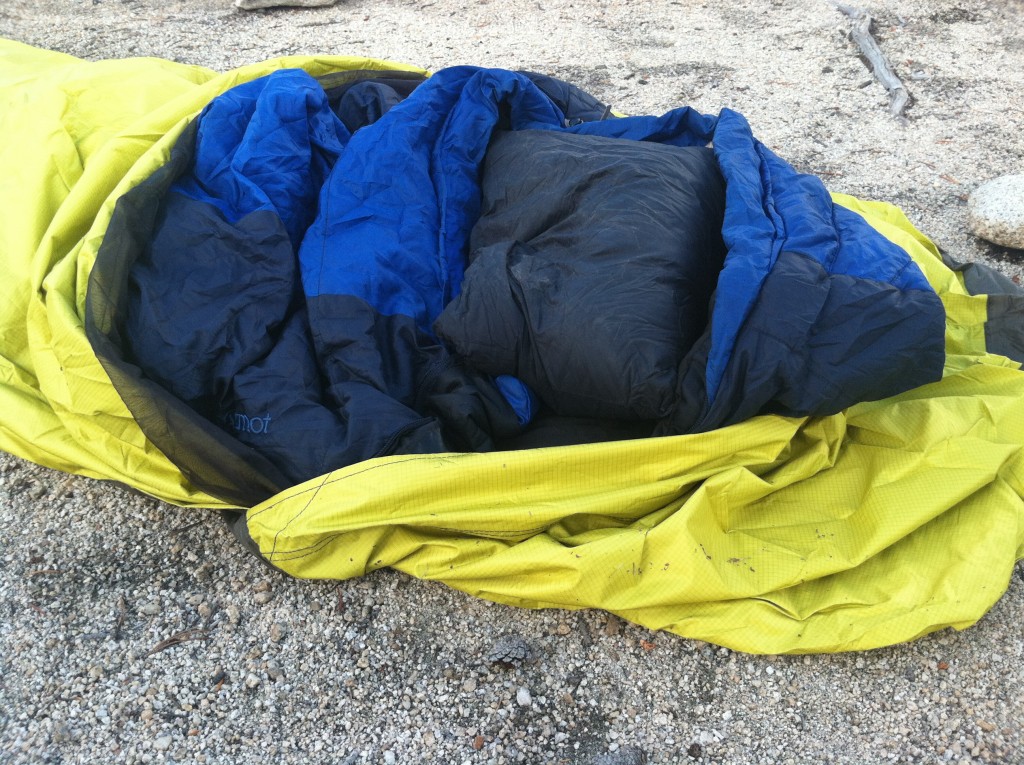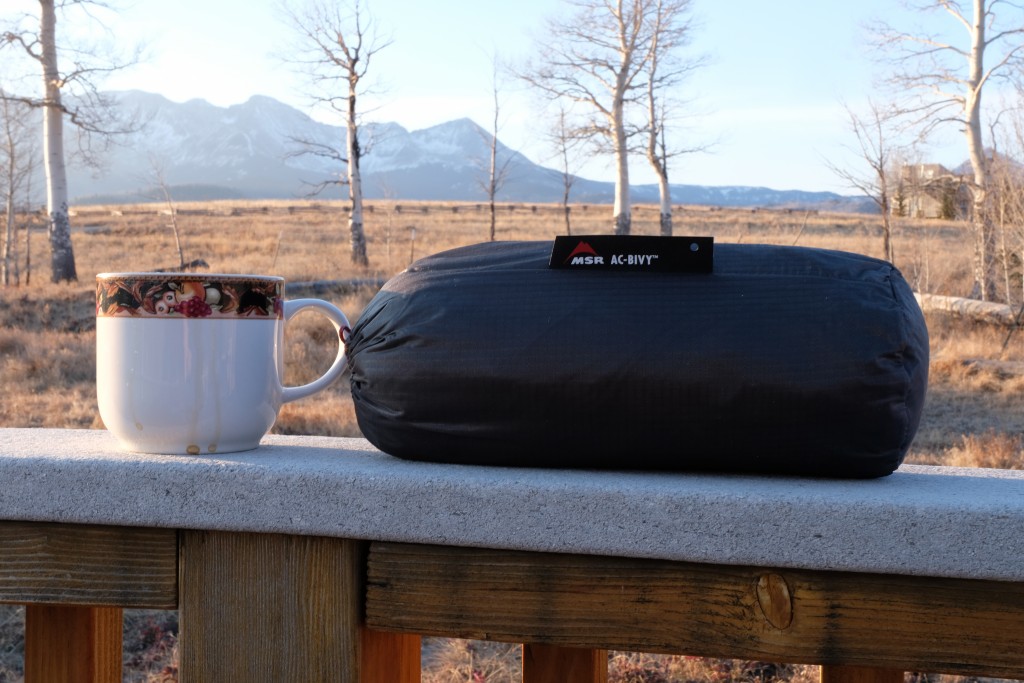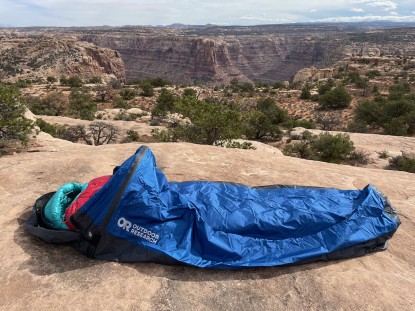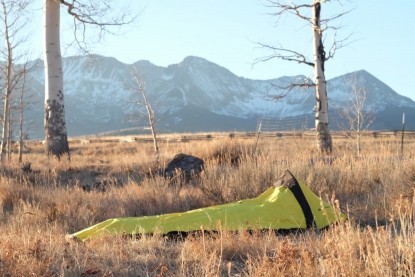MSR AC Bivy Review
Our Verdict
Our Analysis and Test Results
The MSR AC is versatile and spacious when in use, yet lightweight and compact in your pack; ideal features for any trip where a tent is ditched to save some weight or to throw in the bottom of your pack on a long day in a remote area, just in case you need to spend the night. While there are features we would have liked to see added, such as a pole for headspace and a zippered closure, it performs respectably in three-season environments and is an excellent option for those looking for a lightweight shelter option. If you like the idea of this jack of all trades style bivy but want a bit more protection from the elements, check out the Sierra Designs Backcountry Bivy, which performs exceptionally well in all conditions and offers a few more creature comforts than the AC.
Performance Comparison
Weather Resistance
MSR has done a great job in designing a lightweight, highly water-resistant bivy sack. The Durashield coated 30D nylon kept moisture out while retaining top-notch breathability. We found the closure system of the AC to be one of the only weaknesses of the bag. The zipper only secures the bug netting leaving the shell open to vent. While this allowed for great venting and temperature control as well as weight savings from an extra zipper, we were left vulnerable to blowing rain and snow.
There is an attachment point on the lip of the closure system, giving you an option to tie the opening down to keep it from blowing open or allowing water to blow in. A future addition of the AC would benefit from a button or snap to hold the closure lip in place without the trouble of having to use any extra p-cord to tie down the opening. If you require ultimate weather protection from your bivy sack and don't mind a few extra grams, check out the Outdoor Research Alpine, as it WILL keep you warm and dry in the harshest, wettest climates. Negatives aside, the AC is extremely good at keeping the elements out. We found the thin 30d nylon to be well suited as a shield from the rain and melting snow.
Despite the lack of a closure system on the waterproof shell, we found the wind resistance of the AC to be excellent (as long as the wind was coming from a constant direction and the vent could be positioned away from incoming gusts). During a particularly windy trip to Telluride, Colorado we realized that the opening created by the vent/bug screen was only slightly larger than we had to open the rest of the bivy sacks to keep condensation low on the inside. For this reason, we felt like the windproof nature of the bag wasn't too adversely affected by the omission of a zipper to close the waterproof shell.
Ventilation
The whole body of the bivy is made of laminated nylon, which makes it more breathable than the completely waterproof fabrics that are used with the Outdoor Research Alpine or Black Diamond Bipod. While the AC is not as waterproof as these other models, it will still keep you dry in all but the nastiest storms. On very few occasions did our testers notice problems with condensation inside the AC.
Along with the more breathable fabric, there is no zipper for the top part of this bag. While this has some disadvantages as discussed above, it does allow for condensation to escape at any time throughout the night. We realized that most, if not all, of the models, had to have the waterproof shell unzipped while sleeping for ventilation; otherwise, we would wake up with a wet sleeping bag outer shell. For this reason, we felt like the omission of an extra zipper to close the shell was an appropriate weight saving measure and probably a hard-fought win for the engineers working at MSR.
Comfort
An ideal sack should be broad enough to sleep restfully in, yet small enough to be portable and light in a pack. The AC has one of the widest shoulder widths of all products that we tested, measuring in at 36 inches. For smaller people, this could be a disadvantage, creating a massive cold dead space inside the bivy. While there is no wire or tent pole to keep the top portion away from the face, the entry opening is large enough to be pried all the way open for unobstructed starlight views. If the thought of having a nylon bivy brushing against your face throughout the night is too much, check out the Sierra Designs Backcountry Bivy, as it offers many similar features as the AC but also the ability to elevate the ceiling away from one's face.
While there isn't a zipper on the waterproof hood, there is, however, a zipper for the mesh covering at the head; this is key to guarantee there won't be creepy-crawlies joining you at night. One downside is that while there is plenty of room and volume in this model, there is no pole to give space between the mesh and your head. One other thing to note is that while this bivy has ample room for any style backpacking sleeping pad, it does not have straps to hold it in place.
Given the extra roomy dimensions that make it easy to toss and turn when you're inside, we missed having the straps the keep organized and untwisted throughout the night. That being said, we gave the AC high marks for its comfort, as we consistently felt warm, protected, and well rested on cold nights using this bivy.
Weight
There's no denying it, weight is important and probably one of the main motivations for obtaining a bivy sack in the first place. The AC landed right in the middle of the pack at one pound. The weight is pretty good compromise considering the features that come with the AC. For those looking for a lightweight model, the AC comes highly recommended. As it stood for our testing, we used a 1 pound Western Mountaineering sleeping bag, and when we had the AC (1 pound as well) in our pack, we felt light as a feather. Two pounds plus whatever sleeping pad you usually rock is a small price to pay for such a large amount of protection and comfort.
Packed Size
Through this testing process, we found that manufacturers have a bad habit of including stuff sacks that are too large, leaving a bit of dead air space that needs further compression. The AC, and most others designed by MSR have the opposite problem, providing a storage sack so small that each time the bivy had to be put away, our thumbs got a serious workout.
Despite the sore thumb muscles, we prefer too small over too large. Even at the end of a hard long day, there was always enough energy to wrestle with the stuff sack. The thin and light fabric compressed quite well and we like that there isn't a penalty in bulk for this very large bivy sack. While the AC ranked high among the models for packability, there were a few that bested it including the SOL Escape and the Frog TACT.
Best Applications
Lightweight backpackers and mountaineers heading into the backcountry expecting reasonable amounts of rain or those in need of an emergency shelter option for peace of mind will enjoy the benefits of this lightweight product. The small packed size, light weight, and great weather resistance make the AC a well-suited Goldilocks/Jack of all trades. We especially like that we could throw extra gear into the head or the foot of this spacious model to keep everything dry (and the morning clothes warm).
Value
The retail price for the AC Bivy is about $200, right about in the middle between the highest end models on the market and those with a more basic construction. It might seem like a steep price, but the light and durable 40-Denier fabric and fantastic breathability are a step above other similarly priced bags. Would we recommend this product to a friend? Definitely.
Conclusion
The MSR AC bivy isn't to hot or too cold, its juuuuust right. Some bivies are lighter, some are burlier, others have more unique features — this bivy does almost everything decently, with its biggest perk being how small it packs down. We consider it to offer the best balance of low weight, small packed size, and solid weather protection.


